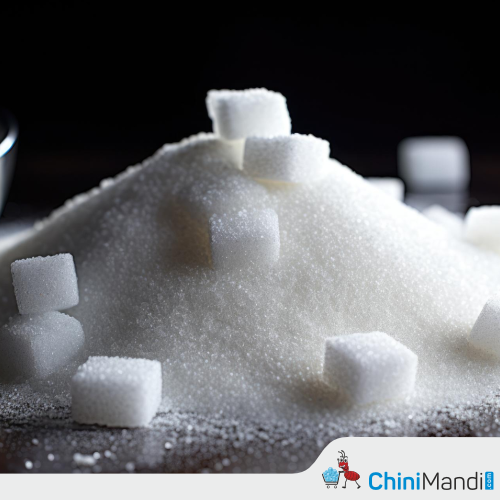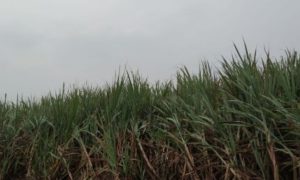De-regulating the sugar industry: do not drop the ball again

The sugar industry in Pakistan faces liquidity issues due to unsold inventory and price caps, exacerbated by last year’s rise in the minimum support price for sugarcane. To resolve this, stakeholders urge the removal of export restrictions and price controls, along with banking reforms. Long-term solutions include encouraging imports, refining, and deregulation for a sustainable future.
The sugar industry is in trouble, but it need not morph into a crisis. Last week, the industry association wrote a letter to the central bank, requesting extension in maturity of its short-term credit lines from September to calendar year end, in view of the unsold inventory held up under bank pledge due to slowdown in commercial demand.
The industry’s predicament is straight forward. Last October, the sugar industry was forced to accept a record rise in minimum support price of sugarcane without protest in the lead up to general elections 2024.To be fair, industry participants anticipated that PDM 2.0 would behave rationally post-elections, taking a long-term view that ensures sustainability for all stakeholders: growers and mills. Despite the rise in cost of production, it hoped that it would either be allowed to pass on the increase in raw material price onto consumers in the domestic market or would be given export access to offload surplus production and take advantage of the record rise in world sugar prices. This was circa Sep – Dec 2023.

Neither happened. At that time, this author warned that a politically embattled Sharif-led government would never dish out export quotas even post-elections, especially at a time when it was engulfed by inflationary fire – and given sugar’s outsized weightage in national CPI and inflation calculation. An imbalance in sugar supply and demand would have further fueled the inflationary fire. Moreover, the risk of being forced to import sugar later due to a shortage was a prospect this government could ill-afford. Zardari maybe, but not Maryam and Dar led Punjab and Centre.
In retrospect, failing to protest the unreasonable rise in minimum support price last year was an ill-advised decision. But it was a commercial bet, and one premised on all actors behaving rationally and on status quo remaining unchanged. What everyone – including this author – failed to anticipate were two additional factors: that the currency would finally find stability, and that the smuggling across Afghanistan would be successfully stopped.

Recall that in Sep 2023, when exchange rate breached Rs300 in the interbank market, local retail sugar prices rose beyond Rs165 per kg, up 76 percent since the beginning of that year. Despite a thaw in domestic demand, local prices at the time rocketed upwards due to speculation in the currency market, a bull run in world sugar market, and the arbitrage for smuggling across Western border onto the Central Asian countries. The trends in sugar offtake indicated that even if export access did not come through, the aggregate demand – whether egged on by currency arbitrage, speculation, or smuggling, would persist – allowing the producers to keep their head above water even if domestic consumption tapers.
Significantly, not only did the leakages across Western border come to a halt abruptly, PDM 2.0 did not allow exports (or did, but very hesitantly). In fact, it went one step further: imposed a price ceiling on local prices of sugar, capping them at Rs140. Not only did the status quo driving market fundamentals shift overnight, the elections were also over. And while the government in Center and Punjab showed concern for short-run inflationary imperatives, their actions would now put the shaky equilibrium between growers and millers to test.

Now, in the run up to the upcoming crushing season the industry association is putting out appeals for a resolution to their predicament. Maybe it senses an opportunity after IMF’s sign off to get out of paying the steep MSP (from last year) to growers. Maybe it hopes to secure a bailout given the very real danger of industrywide shutdown and delays in loan settlement with commercial banks. What is missing, however, is leadership with a clear sense or vision for industry’s future – and a road map towards successful deregulation in the brave new world of no MSPs and no export quotas.
Perhaps individual firms and market participants cannot be blamed for making commercial decisions premised on rationally driven public policy. On the other hand, industry associations must take into account political economy, offer leadership to its member firms, and provide forward looking guidance to policymakers such that the efficient frontier is pushed ahead for all stakeholders. Not only the days of receiving subsidy against exports long gone, put an end to not only by fiscal constraints but also in the aftermath of anti-dumping investigation undertaken by WTO on Brazil’s request back in 2018-19. Demanding export quotas erratically will no longer heal the rot at the heart of this industry. It must adopt radical reform as its advocacy agenda if it is to protect itself from culpability for letting another crisis unfold while refusing to douse the flames. Below is one blueprint.

Short run:
- The IMF has solved one part of the problem by barring provincial governments from issuing MSPs. However, in the short run, MSP alone may not solve industry’s troubles. Even if buyers and sellers are free to fix purchase price of sugarcane between themselves, the elephant in the room is unsold inventory from last year. As a first step, therefore, exports of sugar must be freed from all encumbrances, immediately. This means: no excise duty on export, no minimum export price.
- As in the case of all other commodities, traders must be allowed to enter the sugar export-import business, rather than restricting the access of exports to sugar.
- Sugar export must not be limited by any condition such as receipt of 100 percent payment; against LCs only etc.
- Banks must remove the annual clean up requirement and extend financing to firms for next season purely on commercial terms. Regulatory restrictions such as mandatory settlement of last year’s pledge financing before fresh financing is allowed must be removed. If a firm qualifies for a fresh line of credit (in spite of carryover inventory) upon assessment of its credit risk, banks should be free to extend credit.
- Local sugar prices shall rise as a result. It must be allowed to do so and find parity with international market prices.
Medium run:
- Import of sugar must be encouraged and made free of any tariff or non-tariff encumbrances. Once private sector participation – other than that of mills or mills appointed agents, brokers and indenters –in import and export of sugar increases, market participants will be able to anticipate shortfalls and surplus more readily and help maintain equilibrium. Public policy objective must be to minimize extreme and sudden price volatility, not price stability for indefinite periods.
- Private sector investment in cane sugar substitutes – whether beet root or high fructose corn syrup – be allowed and facilitated to reduce the outsized influence of cane millers on sugar policy.
- An estimated two-thirds to eighty percent of refined sugar is consumed by B2B participants in confectionary, beverages, and hospitality industries. Any cap on ex-factory price of sugar offers an outsized benefit to B2B sugar consumers, and not retail end consumers of sugar.
Long run:
- Allow raw sugar tolling to sugar industry to encourage refining as a full-time industry and explore its re-export potential.
- Make concerted efforts to ensure that domestically produced white refined sugar becomes the first locally produced commodity to be traded on a local futures commodity exchange.
- Encourage B2B trading of sugar through the commodity exchange.
For any political government that claims to seek market reform and deregulation, the sugar industry presents the easiest test case. On the one hand, it is heavily politicized. On the other hand, it does not have an outsized footprint or forward linkages that would otherwise make it critical. It is capital intensive, does not employ a lot of labor, does not generate a ton of exports. Cane is grown by the smallest number of farmers compared to other cash crops such as wheat or rice. The sugar industry relies mainly on self-generated power; truly operates for just 90-120 days a year. Compared to hundreds of rice mills or spinning factories, the country has less than 75 fully operating mills that are perhaps owned by fewer than 40 sponsor families. Many of these are financially sound and solvent to wither periods of financial trouble, especially if it means better days await ahead.
It is unfortunate that thus far the industry has been led by business groups whose decision making has often been dictated by non-commercial, often political motives. These flawed policies over many years have brought things to a point where three or five mills may face closure in the days to come. The truth, however, is that macroeconomic disaster of the last few years has shutdown factories across many industries, and sugar milling hasn’t exactly faced the worst of circumstances.
But if it is to thrive in a new brave world it must take ownership for its circumstances and find leadership to demand reform, rather than waiting for Islamabad to come to its rescue.
Source Link : https://www.brecorder.com/news/40324698/de-regulating-the-sugar-industry-do-not-drop-the-ball-again
















